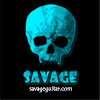Lighting the subject
Subject lighting is a very involved subject, so I’ll take a few weeks to tackle it.
This week White Balance and simple lighting.
There are many different ways to accomplish a similar goal when photographing your woodwork. Flash, tungsten or halogen lights, or sunlight all work, but each has its own challenges. One of the biggest challenges you will face, is getting good color. All light has color and when you match the color of the light and the settings on your camera, the color in your pictures will look like the color on the real project. If you have a mis-match between lighting and camera settings, there will be a distinct color cast to your images.
There are at least 6 common light sources and colors that photographers face. Daylight, shade, overcast, flash, incandescent, and fluorescent. Daylight is simply light that is near the same color as direct sunlight, and can come from several different sources. Shade is lighting under a tree or in the shadow of a building, and overcast is light under a cloudy sky. Tungsten is light from household light bulbs or quartz halogen lights. Fluorescent is obviously lighting from fluorescent fixtures. Camera flashes are designed to be a close color match to daylight.
Most modern digital cameras have a setting to match the color of light source to the camera. This is called white balance (WB). To get the best possible color, it is critical to set the WB before you take the picture. Most cameras have an automatic WB setting. This works well much of the time, but just like getting the right exposure requires an average scene, auto WB also requires an average scene. If there is a dominate color in the scene, and/or no neutral white or grey area, the scene will fool the camera, and you will get an unwanted color shift. In these cases, you will have better success if you manually set the WB. Your manual will tell you exactly how to set the WB, but in general for most cameras:
For sunlit subjects, set the WB to sun, the sun icon, or a number near 5500K.
For tungsten lighting, set the WB to indoor, the light bulb icon, or a
number near 3400K.
For overcast lighting, set the WB to cloud, the cloud icon, or a number close to 7000K.
For images taken in shady areas, set the WB to shade, the building shadow icon
(sometimes a tree icon) or a number close to 7600K.
For flash, set the WB to flash, the lightning bolt icon, or a number close to 5700K.
Any of these light sources can produce quality images.
As for fluorescent, Just Say No! Fluorescent light is garbage. Even though most cameras have a WB for fluorescent, they struggle to get good color. There are a number of complex and messy technical issues that cause this, so for your own sanity, don’t use fluorescent light. If you are already using the high CRI lights and like the results you’re getting, then keep using them. If you have not got a fluorescent set-up, don’t. Use one of the other types listed above.
Now, lets broach that dreaded topic SHADOWS. As I read the forum questions about getting better pictures with no shadows, I just cringe. Shadow are our friends, not our enemies. Try to think of shadows like dogs. Nobody likes an untrained, out of control dog who chews on stuff, chases people, and does whatever it wants to. However, a well trained, under control dog is mans best friend. So like the dog, we are going to train and control our shadows, making them an important part of our pictures. We are trying to depict a 3 dimensional object on a 2 dimensional piece of paper, so we use shadows to give the illusion of 3D. It is possible to create a picture that is almost shadow less, but by doing so, we will be removing any shape and texture in our subject. We refer to these images as “Flat”, because this type of lighting flattens out the features of the subject. You worked so hard to roll that perfect bead, or carve that fine detail, so lets make it show up in the pictures. We do that by careful placement of shadows. It’s not hard , but does take some practice.
So to start, don’t use a flash mounted on the camera, or else turn it off. If the flash is built in, there should be a menu setting to turn it off. Any light that comes directly from the camera will flatten your image and cause hard ugly shadows behind your subject. It also causes a bright reflection in your piece, usually at the top center. The more glossy the piece, the worse the reflection. Now that your flash is off, we need a light source, so let’s start with the cheapest and easiest… Window light. We want a window with bright light coming in, but not direct sunlight. Set your project up a few feet from the window like in picture A. The light should be coming from the side. Remember the light source is not direct sunlight, so cloudy or shade is your best choice for WB. Avoid strongly colored walls or other objects as they can reflect unwanted color into the image. This setup alone may provide you with an excellent image, but if the side shadow is too dark, let’s control it. Just take a piece of white paper and place it along the shadow side of your subject, (picture B & C) to reflect light into the shadows. Closer to the subject makes the shadows lighter. Move it back and forth until you have pleasing shadows, and shoot the picture. I used card stock from Staples...13 cents. For less than $1.00 you can get excellent results.
In next weeks tip, I’ll cover some inexpensive light fixtures and ways to control each of these light types, and the shadows associated with them.





 Reply With Quote
Reply With Quote







